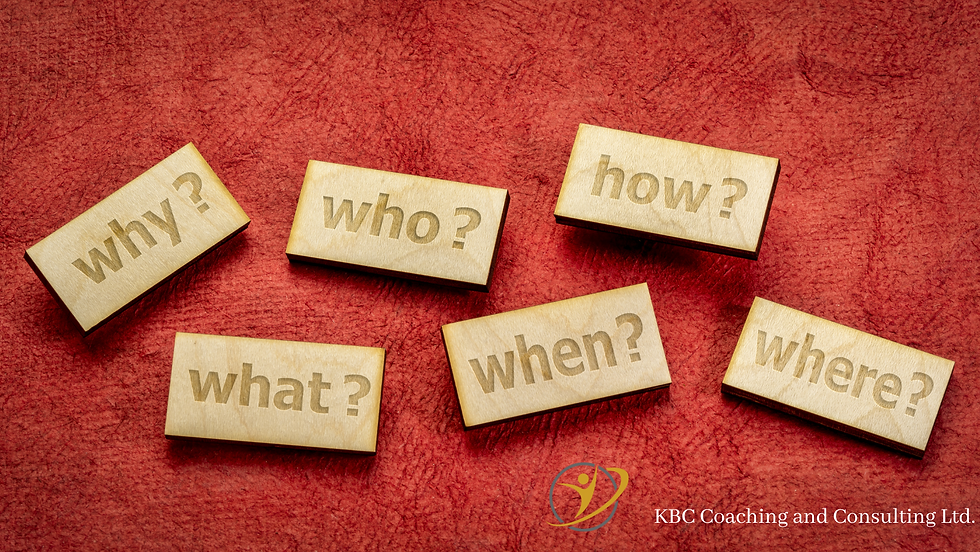The Hidden Weight of Choice
- katrincharlton
- Jun 9
- 4 min read
Updated: Jul 8
🧠 Why Decision-Making Feels So Heavy – and What to Do About It
From the moment we wake to the moment we crawl back into bed, life is a series of choices.
Tea or coffee?
Speak up or stay quiet?
Step forward or hold back?
Some decisions are small. Others feel monumental. But for many high-achievers and senior leaders I coach, it’s not the size of the decision that feels hard — it’s the constant need to decide. Again and again. And often, there’s the added pressure to decide fast.

The Invisible Load of Everyday Choices
It’s said we make around 35,000 decisions a day. That number may not be exact, but the point stands: We are deciding far more than we realise.
One study found adults make over 200 food-related choices a day—without even noticing most of them. Add in your inbox, your team, your to-do list, family life, and future plans... and your brain is in constant action.
These are what researchers sometimes call micro-decisions—— the subtle, fast, often unconscious ones — build up. And by the end of the day, it’s no surprise we feel depleted.
Why the Brain Gets Tired
Your brain’s decision-making centre, the prefrontal cortex, is like a top-performing athlete: smart and capable—but not built to go nonstop.
Making decisions uses up mental energy. And under pressure, uncertainty, or rapid-fire change, your brain starts to struggle. It literally gets tired.
💡 Neuroscientist Lisa Feldman Barrett talks about the “body budget”—your brain’s way of managing internal resources. Every decision, especially an emotional one, takes a little from your reserves.
When the budget dips too low? That’s when we feel foggy, indecisive, or overwhelmed.
The Left-Right Dance of Good Decisions
You’ve likely heard the classic split:
🧠 Left brain = logic, facts, structure
🎨 Right brain = intuition, emotion, big-picture thinking
In reality, good decision-making is a dance between the two.
• Overuse the left, and we risk overthinking, losing touch with our gut.
• Ignore the right, and we miss subtle signals and emotional context.
• When both collaborate, decisions become clearer, more grounded, and aligned.
There’s truth in it—but it's more of a dance than a divide. The best decisions happen when both sides work together.
Why Even Small Decisions Can Feel Heavy
It’s not always about what we’re deciding — it’s about what it touches.
Fear of getting it wrong
Worry about judgement
Past mistakes
A shift in identity
Pressure please
A voice from the past saying, “Don’t mess this up”
Or even and identity shift the sense that the next step might change who we are
Add in noise, speed, and never-ending input—and it’s no wonder we feel stuck. In coaching conversations, we often uncover these hidden weights. And naming them is the first step to moving forward.
Speed vs Wisdom
We often glorify fast decision-making in leadership. But speed doesn’t always mean strength. Some of the wisest decisions come when we pause. When we listen — not just to the data, but to ourselves.
This is where interoception comes in: the ability to tune into your internal signals — like your breath, heartbeat, or gut feeling.
A study on high-performing traders (Kandasamy et al., 2016) found that those more attuned to their body’s signals made better decisions than those who weren’t. Not because they were faster. But because they were more connected to their internal cues — their inner wisdom.
How to Make Better Decisions
Here are a few Coaching-Inspired Tips to Try This Week:
🧭 Zoom out before zooming in
What values or vision does this decision connect to?
🧹 Declutter your options
Too many choices = mental fog. Narrow to 2–3 clear paths.
💬 Name what’s underneath
Is it fear? Perfectionism? Past regret? Naming it loosens its grip.
🚶 Step away before stepping in
A short walk, a deep breath, or a night of sleep can shift perspective.
👕 Simplify routine decisions
Pre-plan the basics — like your clothes, meals, or schedule.
(Executive coach Marshall Goldsmith famously only wears green polo shirts and beige trousers — extreme, perhaps, but it saves brainpower.)
👉 And here are two prompts to deepen the reflection — and gently shift you towards a more intentional way of leading:
⭐ Choose your pace
Urgency doesn’t always equal importance. Not everything needs a quick answer. Slowing down helps you respond, not react.
⭐ Ask: Who do I want to be in this moment?
Anchor into your values. This shifts the focus from action to alignment. Let your values lead the way.
These go beyond decision tips — they touch on executive presence and navigating transitions. It's about choosing with intention and courage, not just speed.
A Final Word
If a decision feels heavy, it might not be a problem. It might mean it matters. That it’s touching something meaningful—your purpose, your direction, or who you're becoming.
Give yourself a moment. Let go of rushing. And remember: clarity often arrives when you stop trying to force it.
Need Space to Decide?
I help leaders and founders create space to pause, reflect, and make decisions with intention—not pressure. Especially in times of transition or uncertainty.
📩 Book a complimentary call if you’re ready to explore what’s next.
📩 Drop me a message or book a complimentary discovery call.
What’s one decision you’ve been sitting with? And what might shift if you stopped aiming for the ‘right’ answer — and started asking what feels most true?
Resources to Go Deeper:
Iain McGilchrist – [TED Talk] on the left–right brain and leadership
Kandasamy et al. (2016) – Study on interoception and trading decisions
The Art of Choosing by Sheena Iyengar – A fascinating book on the psychology of choice
#ExecutiveCoaching #LeadershipCoaching #KBCcoaching #KindDisrupter #SciencemeetsSoul #DecisionMaking #Transitions #NeuroscienceInLeadership #InnerWork






Comments